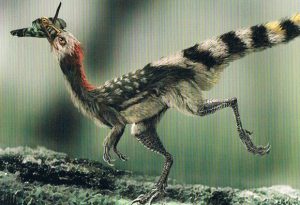The Principle of Preadaptation
A challenge to the early proponents of natural selection and the theory of evolution was the criticism that this concept was flawed as natural selection could not explain how the earliest stages of useful structures formed. Darwin himself, commented on how the fossil record was inadequate when it came to looking for evidence to support his theory on the origins of species. How could major biological adaptations get started? How did complex eyes evolve? What good is an asymmetrical wing on an organism when it is only 2% evolved?
The Principle of Preadaptation
Darwin proposed that a feature would perhaps have evolved for one purpose that in retrospect would turn out to be highly advantageous in any changed circumstances. A feature once performed a quite different role in ancestors, but was, by serendipity, well suited for transformation to serve another function, especially under new circumstances.
The evolution of feathers, a trait first identified in the Dinosauria is an illustration of this. Feathers are highly modified reptilian scales. In some members of a reptilian population, scaly outgrowths, over-sized scales may have served some other function, perhaps to help cool the animal, or to signal (visual display) or perhaps for insulation, trapping warm air close to the body. Even the smallest scaly outgrowths may have conveyed some advantage. Individuals within the population the possessed the trait for these outgrowths would have had a slight advantage over other member of the species. As a result, more of these traits were passed onto the next generation through these individuals living long enough mature and breed.
Over many generations, longer and longer scales may have been actively selected, thus leading over time to the evolution of feathers as insulating structures or display organs.
The Evolution of Feathers in the Dinosauria
Picture credit: Chuang Zhao
A secondary flight function would have evolved by natural selection later.
Visit Everything Dinosaur’s website: Educational Dinosaur Models and Figures.


